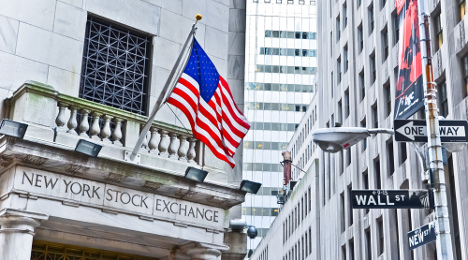2 views of what Wall Street volatility means in auto

With the stock market wobbling at times recently more than that beater on your lot with the really bad tires and alignment, Cox Automotive chief economist Tom Webb and Edmunds.com director of industry analysis Jessica Caldwell each took a turn to consider implications in the auto world.
Webb acknowledged when he was assembling the August Auto Industry Brief that it is “bind of hard to write a monthly brief on a Friday afternoon when the Dow has just plunged 531 points,” referring to the Aug. 21 decline.
The Cox Automotive expert recollected about what he compiled a month earlier, stating “international markets continue to haunt.” Webb along with many Wall Street observers attributed the stock market’s recent behavior to what’s happening in China and elsewhere around the globe.
“Those forces have now become more than an ephemeral apparition,” Webb said. “Real dollars are flowing, real equity has been destroyed, real risk premiums are rising, and financial markets are unprepared to digest even long-anticipated, and long-overdue, policy shifts. What’s a forecaster to do? Put on the blinders and proceed ahead, trusting that the outside forces will not derail our slow movement forward? Such trust would not be unfounded.
“The U.S. has no excesses or imbalances building up in its economy,” he continued. “Labor market conditions are not spectacular, but they are solid. Credit markets (domestically at least) are also performing well. And the auto industry is outperforming the overall economy.”
Webb then pointed out the specific areas where the auto industry is providing an economic highlight for the entire country.
“New-vehicle sales are up with the aid of some, but not an excessive, increase in incentives. Wholesale used-vehicle pricing remains firm, and dealer retail activity is generating strong profits as a result of increased operating efficiencies,” Webb said.
Those new-vehicle sales in August might not as strong as a year ago since auto sales from Labor Day weekend were included in last August’s results. Meanwhile this year, they will be parceled into September 2015 sales.
Still, Caldwell from Edmunds doesn’t believe any sales softening will stem from Wall Street swings. Edmunds forecasts that 1,538,958 new cars and trucks will be sold in the U.S. this month for an estimated seasonally adjusted annual rate (SAAR) of 17.4 million. The projected sales will be a 2.1-percent increase from July, but a 2.8-percent decrease from August of last year.
“Sales momentum in August has been strong despite recent stock market fluctuations,” Caldwell said. “The fact that we will likely see a year-over-year decline in sales isn’t a troubling sign because last August was a monster month that included Labor Day weekend.”
What the Fed might do with interest rates
In his latest brief, Webb also touched on what the Federal Reserve might to do interest rates, which eventually could impact activity in the F&I office.
Webb recapped that a couple of months ago, the majority of analysts were expecting the Fed to raise the targeted federal funds rate in September. By the middle of this month, Webb called that view as only “a 50-50 proposition.”
And, with international financial markets becoming increasingly volatile, even before the selloff in equity markets, Webb added that the futures market was betting on only a 33 percent chance of a rate hike.
“If markets don’t calm between now and the Sept. 16-17 Fed meeting, expect another pass on the rate hike,” Webb said.
Meanwhile the analysis team at Comerica Bank generally agreed with Webb’s position in an economic update posted on Friday.
The Comerica Bank team that includes chief economist Robert Dye said, “financial markets are firmly focused on the Federal Reserve, anticipating what policy makers will do at the upcoming September 16-17 FOMC meeting. We believe that the most likely timing for the first fed funds rate increase is still September, but that is not written with overwhelming conviction.
“We would place the odds of a September rate increase at 30 percent. Late October gets 25 percent and mid-December gets 20 percent, leaving 25 percent for all of 2016. The flattish probability distribution reflects the potential for more financial market stress in the near term,” the bank team went on to say.

 View The Latest Edition
View The Latest Edition

